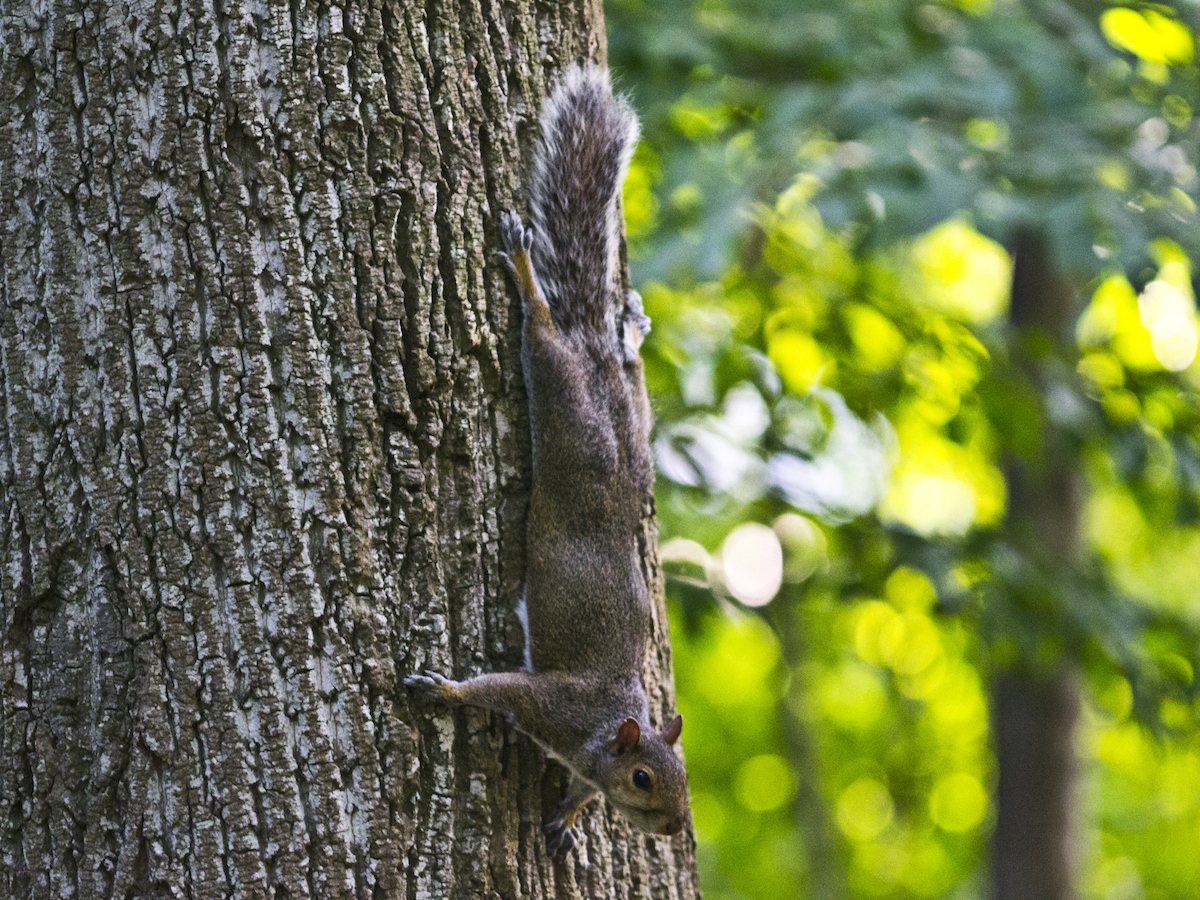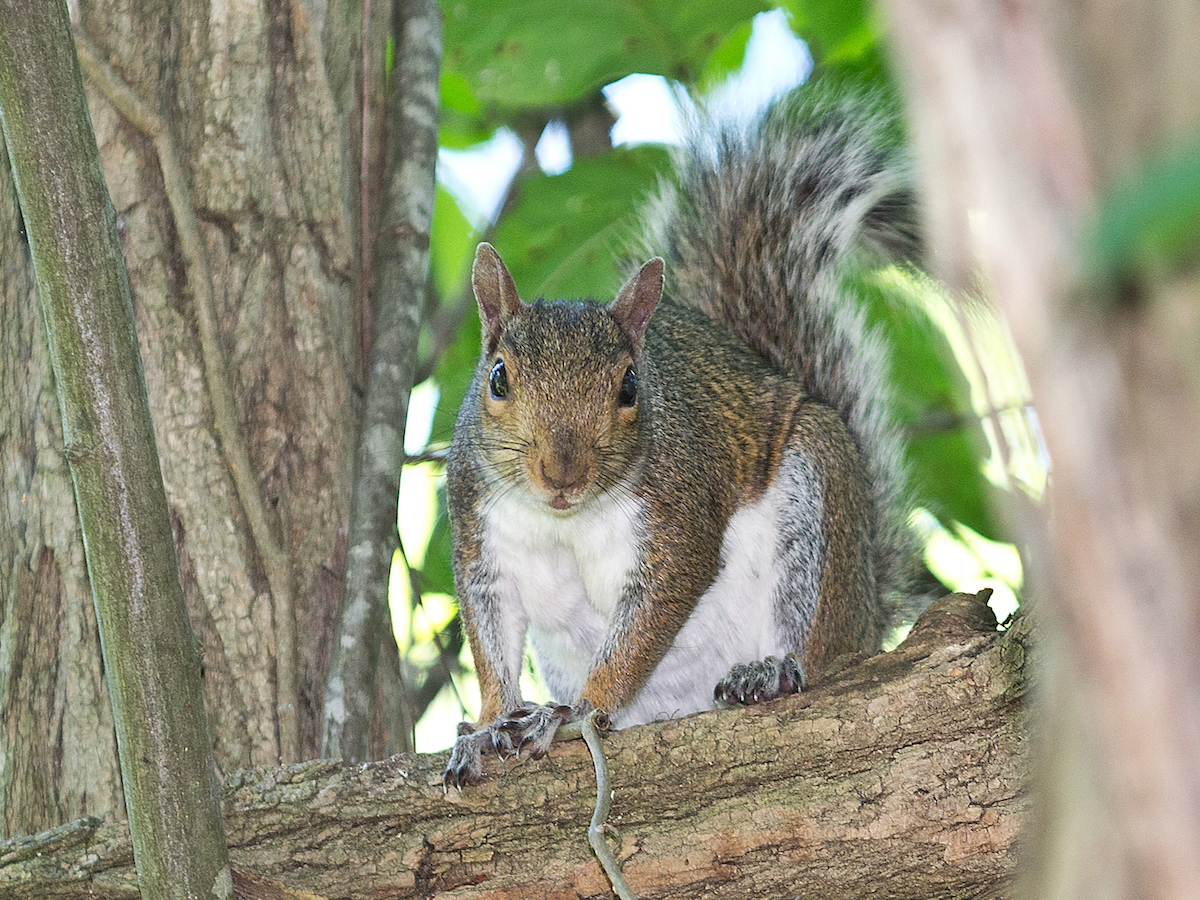Tree Squirrels Sciurus spp. Tamiasciurus spp.

Tree Squirrel Identification
Color: White to gray, yellow, red and brown with a pale, dark belly
Size: Head and body is 6-15” and tail is 4-14”
Legs: 4
Antennae: No
Shape: Long body covered with short, thick fur, bushy tail
Region: Found throughout the Unites States
What Are Tree Squirrels?
Tree squirrels get their common name from the fact that they are found in wooded and urban areas with trees. They nest, avoid predators and harvest food in trees. “Tree squirrels” is an all encompassing term for several species, including fox squirrels, gray squirrels, flying squirrels and pine squirrels. Keep reading to learn more tree squirrel facts.

What Do Tree Squirrels Look Like?
Fox squirrels are approximately 19-29” in length. Their color may vary by their surrounding habitat and regions in which they are established. In the northeastern part of the fox squirrel’s range, they tend to be gray on top with yellowish undersides. In the western part of the range, they are a bright rust color. In the southern part of the range, they tend to be black with white patches on their faces and tails. Gray squirrels have bodies that are 8 to 10 inches long and tails that are 7.5 to 10 inches long. Their fur is dark gray with intertwined sections of paler gray. Pine squirrels, which are also called red squirrels, have bodies that are 7 to 8 inches long and tails that are 4 to 6 inches long. Their fur is rust red or gray on top with white or grayish-white undersides and tails with black bands and white edges.
Fox squirrels feed mainly on hickory nuts and acorns, but also eat the fruit of tulip poplar, maple tree seeds, corn bordering woods, berries, bird eggs and fungi. Gray squirrels feed primarily on nuts, especially hickory nuts, acorns, beechnuts and walnuts. In addition, they occasionally feed on maple or tulip tree seeds, fruit, opening buds and corn. Pine squirrels feed on a great variety of seeds, nuts, berries, bird eggs and fungi. As an interesting fact, tree squirrels may also eat small insects, caterpillars, small animals, and young snakes.
Fox squirrels are most active in the morning and late afternoon often burying nuts for winter use. Fox squirrels generally favor hickory-oak forests, but in the South, they inhabit mixed and pine forests and cypress and mangrove swamps. They live in populations of between 2 and 6 squirrels per 2 acres.
Gray squirrels are active year round, but they are most productive in the morning and evening on dry days. They prefer hardwood or mixed forests with nut trees, especially oak-hickory forests and river bottoms. They bury nuts individually far away from where they were found. Frequently, the gray squirrels do not find the nuts they have buried and trees grow. Gray squirrels live in populations of between 2 and 20 squirrels per acre.
Pine squirrels are active year round, especially in the morning and evening. However, they are sometimes active after dark as well. They inhabit all kinds of forests, including hardwood, coniferous, or mixed forests. Pine squirrels store green conifer cones and nuts in caches, but they store fungi individually between the branches of trees. They live in populations ranging from 2 squirrels per 3 acres to 10 squirrels per acre.
Fox squirrels favor oak-hickory forests, but they are also found in pine forests and cypress and mangrove swamps in the South. During the summer months, fox squirrels make leaf nests in trees and they often overwinter in a common tree hole.
Gray squirrels are found in hardwood or mixed forests with nut trees, especially oak-hickory forests and river bottoms. In the summer, gray squirrels nest in tree cavities or build nests made of leaves in branches. In the winter months, they are known to invade structures and homes looking for a place to overwinter. Pine squirrels are often abundant in any kind of forest and are commonly found around buildings. Pine squirrels usually nest in tree cavities or nests made of leaves, twigs and bark. Tree squirrels enter homes when development reduces the number of trees available for nesting.
All three species of tree squirrels can become household pests because they frequently enter attics in the winter; however, they rarely pose a health threat to homeowners. Inside homes, tree squirrels might cause considerable damage to heating and air conditioning systems if they gain entry into electrical equipment rooms. Tree squirrels may create holes in siding and cause damage to attic insulation.
Outdoors, these squirrels can cause considerable damage to electrical and telephone cables. Tree squirrels may also chew holes in siding. Sometimes, tree squirrels destroy bird feeders in pursuit of birdseed.
Squirrels may bite when disturbed and should be left alone. Take precautions to avoid being bitten and if bitten by a squirrel, seek medical attention.
Signs of tree squirrel infestation include noises from squirrels in attics, chimneys, walls or vents; holes in siding; damaged bird feeders; chewed wires; attic insulation damage; and evidence of squirrel nests in the attic.
There are many important steps to prevent a tree squirrel infestation inside the home. It is recommended to seal all possible points of entry around the house, including small openings and cracks around doors and windows. Screening vents and openings to chimneys can also prevent squirrels from entering homes. Food should be kept in airtight containers and garbage disposed of regularly. Additionally, tree limbs should be cut back 6 to 8 feet from the roofline. The use of mesh or wire fences can help protect gardens. Lastly, thorough inspection of wires, insulation and walls for gnaw marks will help signal a possible infestation.
If you find feces, hear sounds of scurrying in the walls or observe other signs of an infestation, contact a licensed squirrel control professional to inspect and treat the pest problem. Contacting a licensed squirrel control professional is especially important, as some squirrels are protected by state and local wildlife regulations.
You can find a certified pest professional near you with the helpful zip code search below.



